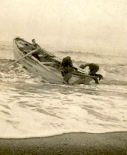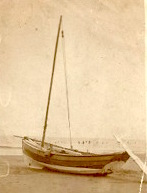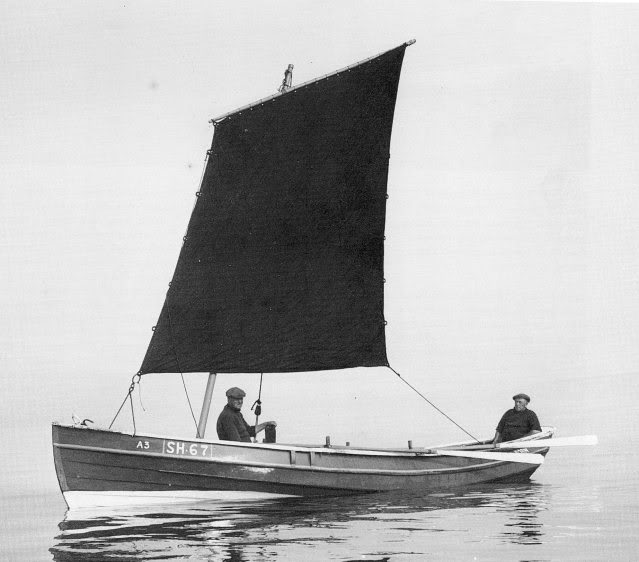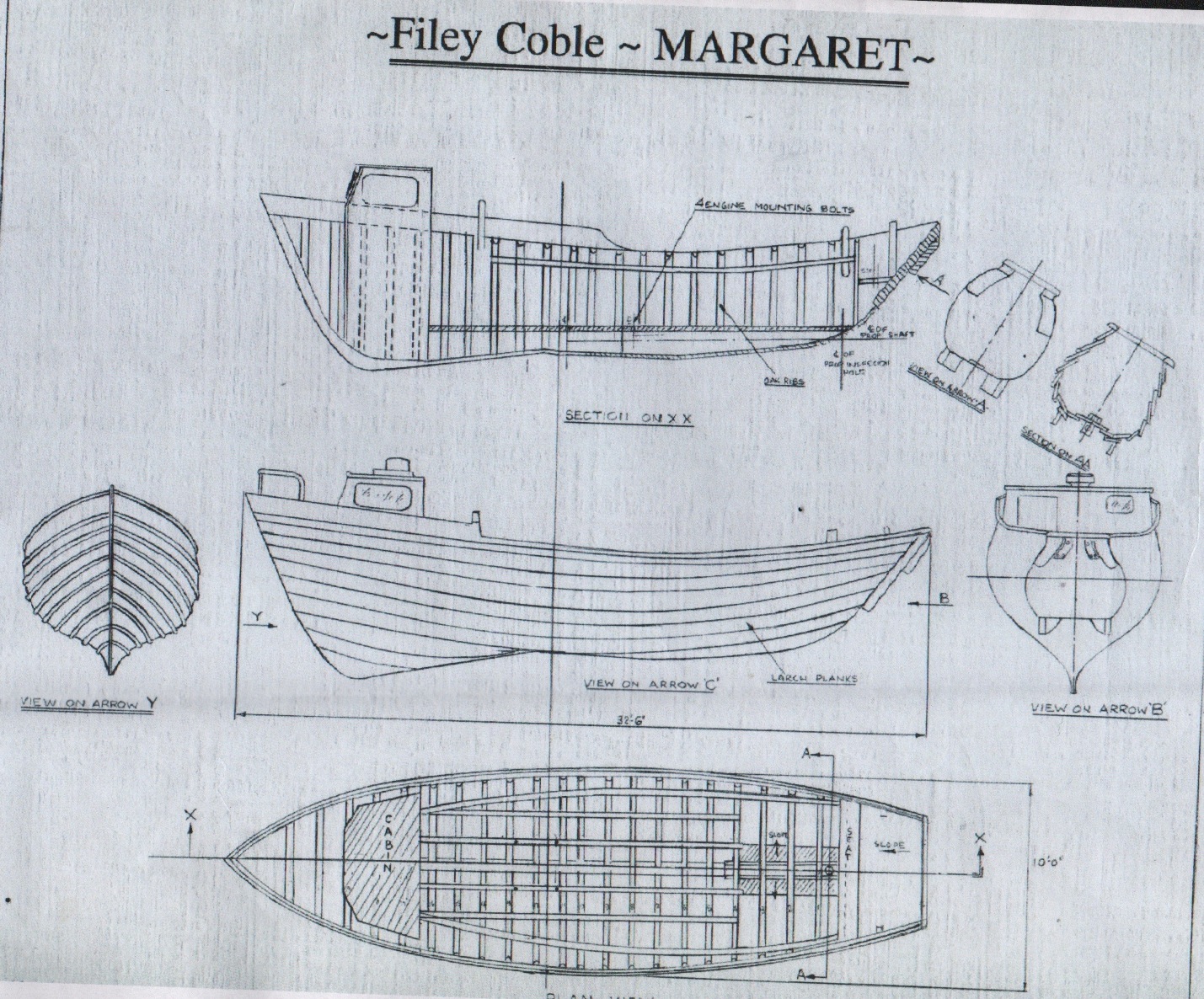Sailing cobles were once a common sight on the North east Coast of England. Pronounced 'cobble', the name is thought to be rooted in the Celtic 'Ceubal' or the breton 'Caubal', both which simply meant boat. The name has been used for more than a thousand years, and was mentioned in the 'Lindisfarne Gospels' The construction of the 'Coble' is remarkably similar to the ancient Viking 'Long Ships'. Many of the features on these boats have Scandanavian names. Indeed, the traditional rigging of the 'Gratitude' would be as familiar to our Norse ancestors as the dashboard of a car is to us today!
The Coble is 'Cinker Built' (the planks slightly overlap each other). The planking is made of Larch timber, and the frames of Oak. A perculiar feature of the 'Coble' is that the planking is constructed first, and the frames 'joggled' in to fit afterwards. This is the reverse of normal boat construction methods. Also, instead of a 'keel' being laid, a flat, horizontal central plank called the 'Ram' forms the first stage of the build.
The 'Coble' was rigged with a traditional 'Dipping Lug' sail. Sometimes, in light winds, a 'jib' was set from the 'Bowsprit', the smaller 'winter mast' being utilised for this purpose. An extremely large 'Coble' might also set a 'Mizzen' mast and sail. The advent of small, lightweight engines made sail obselete in the years following the Second World War, although oars, and an 'auxiliary' sail, with a short mast, were often carried as a safeguard. Sails and oars were eventually discarded when engines became more reliable. Engines had a pronounced effect on the shape and size of the cobles. The method of construction remained similar, but the boats became larger, and more rotund to increase their carrying capacity.
In the 1970's, it was realised that only a precious few of the sleek and graceful old style of coble remained, and a few entusiasts set about various private restoration schemes.
Plans to build a Traditional sailing coble took a positive turn when Mr David Wharton, of Whitby, received grant aid from the English Tourist Board to build a brand new vessel.
The 'Gratitude' was intended as a floating museum piece. The Master builder chosen for the task was Mr Hector Handyside, of Harrison's yard in Amble. Harrison's were one of the last yards to build the old style sailing type. Mr Handyside remembered old boats , some dating from the 19th Century), being scrapped. He said that the 'Gratitude' was built using the 'earliest methods of construction that he had seen', and based upon the 'Yorkshire fishing' type , which is slightly different in shape to the 'cobles' of his native Northumberland. This new boat was launched in 1976.
Mr Alan Richmond, of Scarborough, later purchased the 'Gratitude' and completely restored the vessel. the re-fit included the provision of more authentic fittings and rigging, which were based on rediscovered photographic evidence, and new sails made by the famous James Lawrence sail loft in Brightlingsea.



